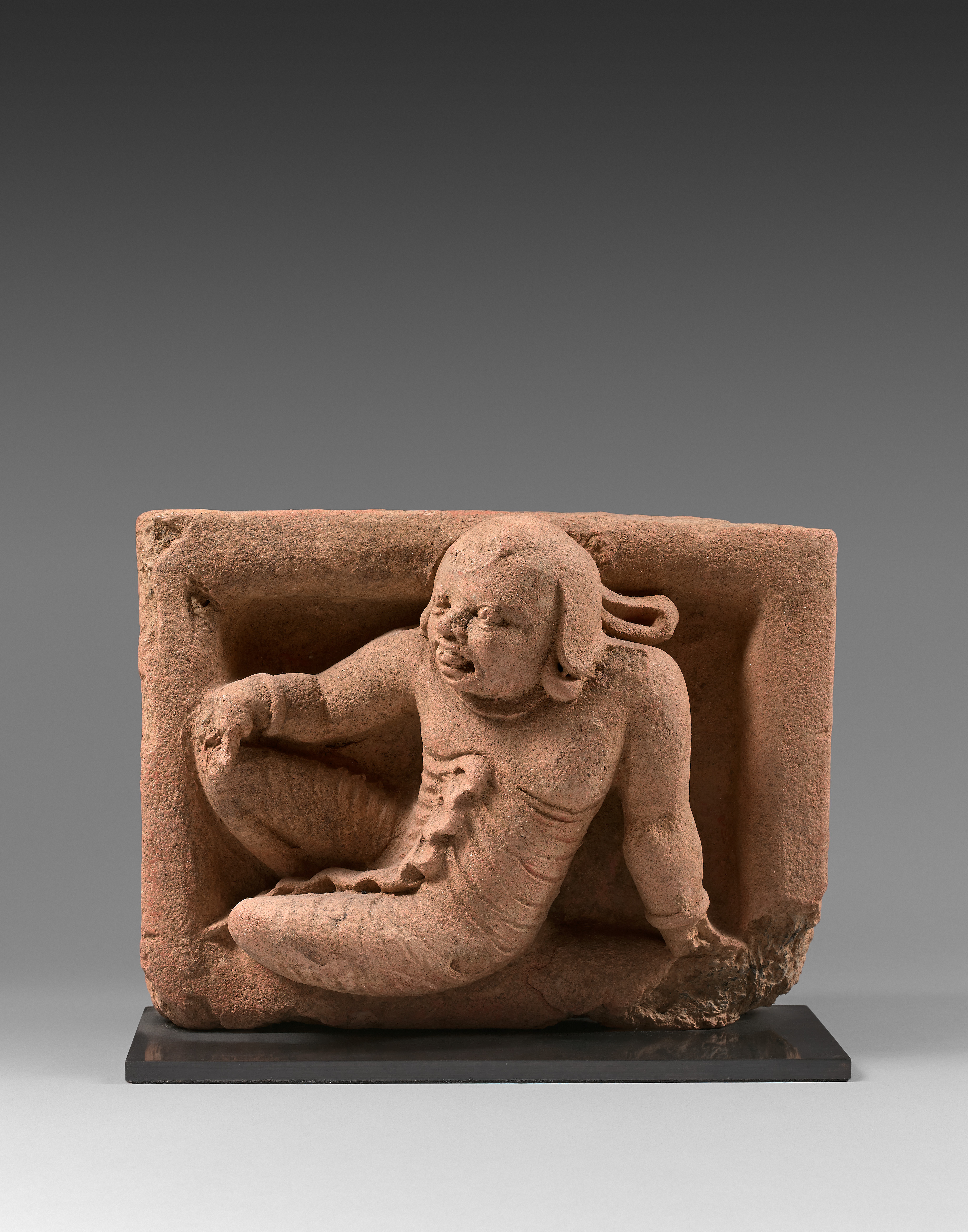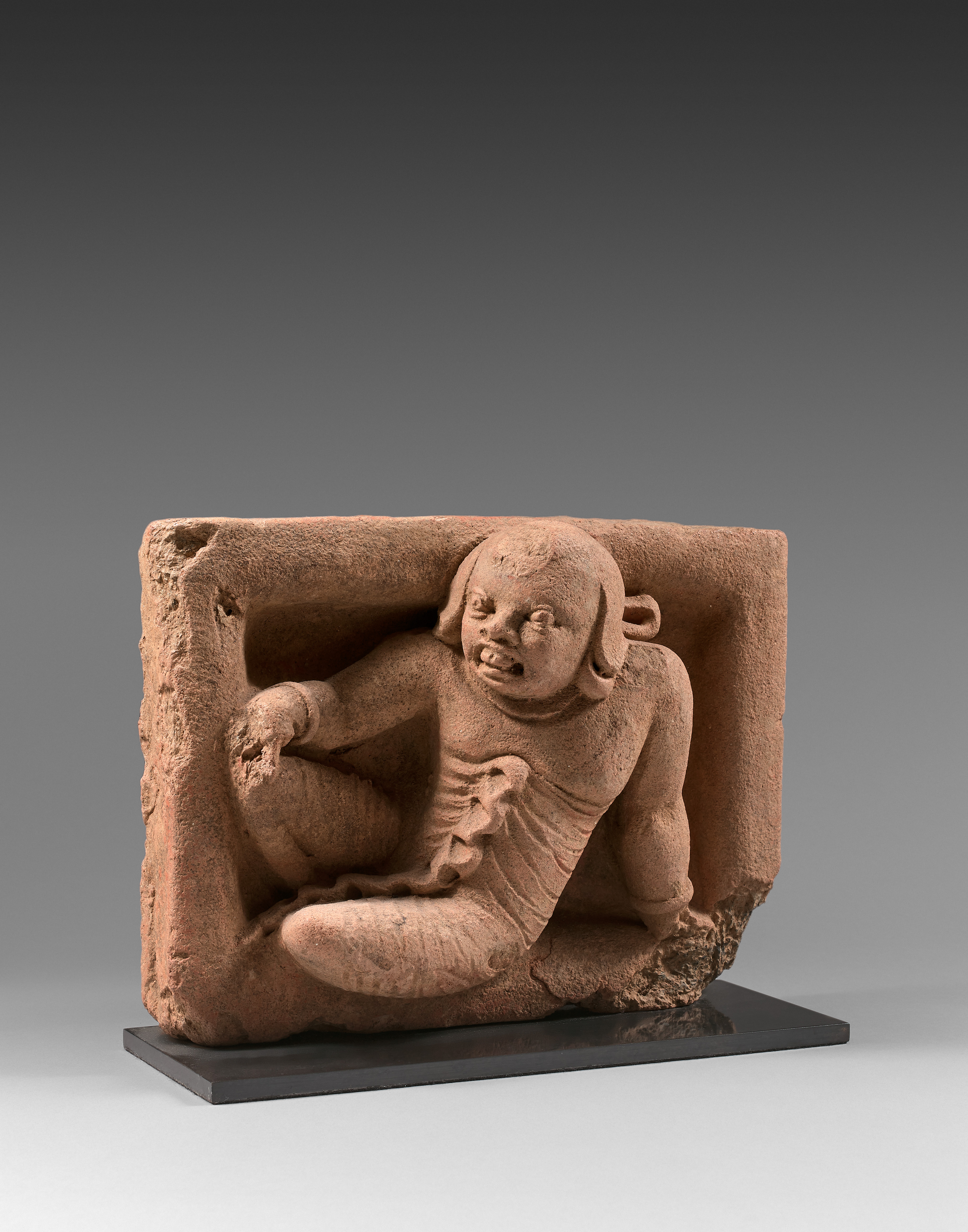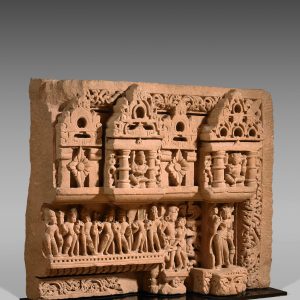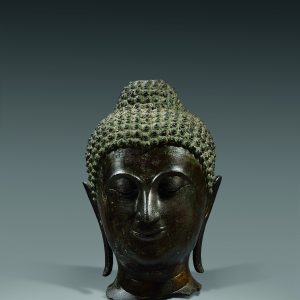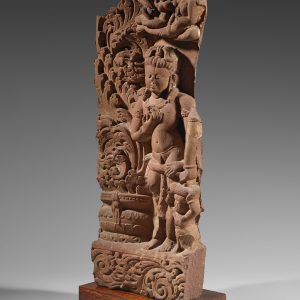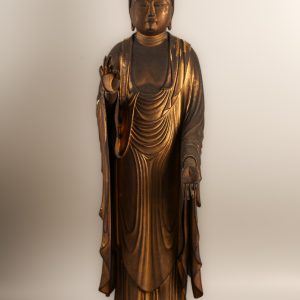Decorative tile
Terracotta
Northern India
4th – 5th century, Gupta dynasty
H. 17 cm or 6 ⅝ in
Description
Full of vitality and singular, this 17 cm high and 23 cm long (6 ⅝ x 9 in) terracotta tile of northeast India is a perfect illustration of the art of the Gupta period of the 5th century AD, a period considered to be the “golden age of classical India”.
Taking place in a rectangular frame, the character modelled in high relief seems to emerge out from it with naturalness and a certain malice. Sitting on the floor, legs tucked under him, the left arm extended behind him, holding the weight of the body leaning backwards and the right hand on the knee, the pose is very original and reflects an obvious ease. The clothing, unusual and carefully rendered, multiplies the tight drapes and, tied at the level of the chest, a fold of the fabric or a ribbon ripples down to the lower body. The hairstyle, also unexpected, seems to be a cloth cap and this singular costume could thus refer to a particular ethnic type.
In addition to the garment, the highlight of this piece is of course the incredible expressive face. One can only admire the technical perfection that presided over its creation: the piece, first made by moulding, was then sculpted with a chisel for an even more striking rendering. Thus, skilled incisions enhance pupils, eyelids, mouth and nostril contours, and folds under the chin. The expression obtained is of undeniable strength and this exuberance is a great characteristic of Gupta art.
This tile, with its very smooth modelling and vivid dynamism, is a superb example of the lively and sometimes grotesque figures that decorated and animated the lower part of the brick buildings at that time.
Provenance: Private collection, UK.

